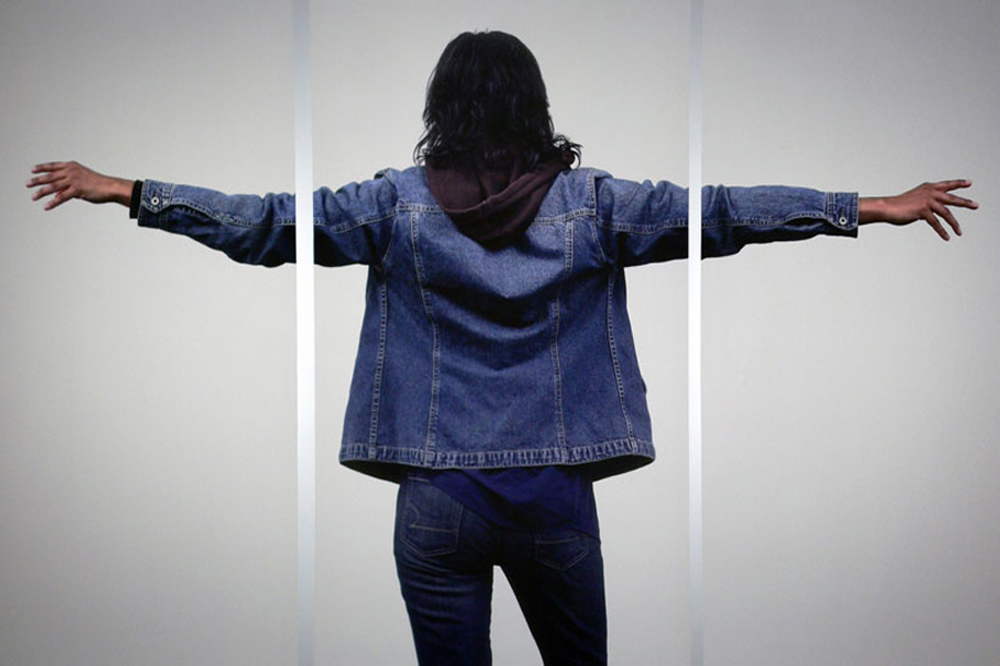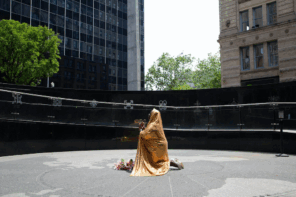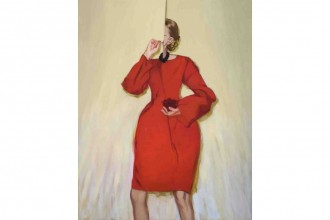At a time when so many critics are perfunctorily setting about their annual “best-of” surveys, Brad Phillips published a 3,000-word article that carried the tone of a clarion call. A frequent contributor to Artslant, and an occasional scribe for Modern Painters, Phillips is known, in certain circles, for his flat-footed, world-weary, and searing (though rarely searching) approach to broad trends and influences in contemporary art. His criticism tends to shout-down rather than call-up, and, at its weakest, can read as impatient, aggressive, and projected or too biased. But he makes himself clear, and – considering he chiefly practices as an artist – doesn’t reveal any fear of market retribution. He writes on subjects ranging from Matisse to Peter Doig, and has, especially in this most recent article, published opinions that are held by many. Indeed, Phillips’s subjects are the kind that go shared in back rooms, and, like any number of character-measuring currencies, at post-vernissage dinner parties. So his opinions aren’t his alone, really, but he’s putting them in print. And that’s brave and commendable. Especially in a place like this.
Canada is, in fact, his most recent target. Phillips opines on a long-felt and oft-discussed sense of competition between Vancouver and Toronto, and Toronto and New York. He feels “there’s something terrifically sad about a rivalry where only one side is even aware that a rivalry is taking place,” and I agree, and so do others. He queries the differences between his chief Canadian art centers, measuring them by their population in contrast to their artistic output and artworld significance. He derives from their perceived discrepancies (Vancouver carries a fraction of its competitor’s population, but, as he sees it, punches well above its weight; Toronto remains ungenerous, mimetic, and “ill”) that the West Coast succeeds due to its isolation, and Toronto fails for its proximity to greatness (New York). These are salient observations. Where Phillips falters, however, is in mistaking international influence and market savvy for isolation, and thinking that one can simply squirrel away for “another essay” the inclusion of a subject so all-important and hyper-relevant as women.
Before I begin, let me quote Phillips’s most offending lines regarding the latter subject. “[That] the following lists do not include any female artists is both problematic, and also too complex to address in one essay. However, I write this piece fully cognizant of the glaring exclusion of women amongst the artists I’m about to list.” Phillips later writes, “there’s no avoiding that the art scene in Vancouver is a boy’s club. Certainly this is unfortunate, but it’s a topic for another essay.”
I’ll first point out the obvious: a social inequity is not an “unfortunate” anything, and certainly not one that’s best broached on its own, like a problem child held after class. It’s addressed by redress, and through corrective enforcement, again and again. It’s done right when not gestured at but tended to – and what were the “census stats” he’d read, exactly, that suggests women are apart?
Had Phillips cared to concern himself with – rather than caveat – the missing half of his subject, he might have arrived at a very different argument. It’s artists like Shary Boyle, Mary Pratt, Joyce Weiland, Janet Cardiff, Liz Magor, Françoise Sullivan, Kelly Mark, Wanda Koop, Doris McCarthy, Betty Goodwin, and so many more, who are not only buoying up but producing the profile of contemporary Canadian art. And we needn’t look further than the current exhibitions on display to prove this: a Suzy Lake retrospective at the AGO currently dwarfs Alex Colville’s frame of gimmickry; a heart-stopping call-to-arms by Wendy Coburn is presented by the Justina M. Barnicke Gallery; an overdue commercial presentation of Rebecca Belmore is on show at Jessica Bradley; a survey of Vera Frenkel at MOCCA; a nuanced portrait featuring Carolee Schneemann at G Gallery; a touring exhibition of Mary Pratt; a 2014 Sobey Art Award for Nadia Myre, and an RBC Painting Prize for Tiziana La Melia. Then let’s talk about the market: galleries helmed by founding dealers like Jessica Bradley, Georgia Scherman, Catriona Jeffries, Olga Korper, and Ydessa Hendeles; collectors and consultants like Jeanne Parkin, Carol Weinbaum, and Robin Anthony; and our two leading art fairs directed by the likes of Susannah Rosenstock and Julie Lacroix, respectively – these are not the exception, they are the rule. You’re just not reading the headlines, Phillips, and you’re certainly not entering the galleries, if you think women aren’t relevant to your assessment. This isn’t a subject for another time, and it’s one that’s waited long enough. Luckily, we haven’t been waiting for your acknowledgement at all.
Regarding the issue of place, this article (“Why There Aren’t More Important Canadian Artists: An Irrelevant Rivalry”) focuses on a founding generation of Vancouver School artists who, by Phillips’s assessment, “never left Vancouver, but smartly bypassed showing in Canada.” He includes in this list Jeff Wall, Ken Lum, Rodney Graham, Ian Wallace, Steven Shearer, and Stan Douglas. It’s not worth quibbling that he’s wrong – that these artists do in fact show in Canada (we needn’t look further than the recent three-part survey of Rodney Graham, or Stan Douglas’s significant Canadian presentations, in recent years, to prove our point) – because it’s more important to query why the author illustrates his argument with such dated subjects. Wherefore Geoffrey Farmer, Isabelle Pauwels, and Scott McFarland? Wouldn’t these examples have provided the ballast for such an adamantly contemporary argument?
What really misses the mark, however, is Phillips’s assessment that Vancouver succeeds for its remoteness from influence. I’d counter that, having recently done a month-long tour of the West Coast, where I searched hard and dear for a critical community in its art scene, and found my hands grasping so much water, Vancouver is, truly, an artist’s city, and a city of academic archiving. Through any number of successful connections and gambits (from the Düsseldorf photography school’s influence on the first generation of the Vancouver School, to Catriona Jeffries’s sangfroid rejection of the very country in which she operates), Vancouver’s international reach has certainly lily-pad-leaped over Canada and gone straight to the European and New York exhibition circuits, and market. I tip my hat to its artworld for that achievement, and it’s a feat that should be studied. But despite this, or maybe as a result, the city hasn’t borne out any truly influential critics in recent years. And this critical vacuum is a signature of Vancouver’s youth, or, at least, malformation. It’s an artworld whose artists reflect on their own (Jeff Wall, among so many others, is a storied art historian and writer). While this, as Phillips suggests, can be read as a measure of its artists’ generosity towards one another – and certainly their investment – it can also be regarded as a community’s artists policing their own narrative. I don’t care how many click-baiting art pundits tell me criticism is newly irrelevant: without a critical presence vetting so much insider art, a healthy and truly international art community cannot be considered legitimate.
Phillips skewers Toronto’s art community for its lack of self-assurance, but I’d wager that Vancouver’s lack of self-doubt is a problem that sows something more fallow. After all, good art arrives in the asking, not the telling. And so too, good criticism. Phillips should try raising his hand, as he takes a knee.























